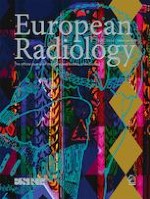Erschienen in:

17.06.2022 | Nuclear Medicine
Combined [18F]FDG-PET with MRI structural patterns in predicting post-surgical seizure outcomes in temporal lobe epilepsy patients
verfasst von:
Zhen-Ming Wang, Peng-Hu Wei, Chunxiu Wang, Yaqin Hou, Kun Guo, Bixiao Cui, Yongzhi Shan, Guo-Guang Zhao, Jie Lu
Erschienen in:
European Radiology
|
Ausgabe 12/2022
Einloggen, um Zugang zu erhalten
Abstract
Objectives
To integrate the glucose metabolism measured using [18F]FDG PET/CT and anatomical features measured using MRI to forecast the post-surgical seizure outcomes of intractable temporal lobe epilepsy.
Methods
This retrospective study enrolled 63 patients with drug-resistant temporal lobe epilepsy. Z-transform of the patients’ PET images based on comparison with a database of healthy controls, cortical thickness, and quantitative anisotropy (QA) of the diffusion spectrum imaging concordant/non-concordant with cortical resection was adopted to quantify their predictive values for the post-surgical seizure outcomes.
Results
The PET hypometabolism region was concordant with the surgical field in 47 of the 63 patients. Forty-two patients were seizure-free post-surgery. The sensitivity and specificity of PET in predicting seizure freedom were 89.4% and 68.8%, respectively. Complete resection of foci with overlapped PET, cortical thickness, and QA abnormalities resulted in Engel I in 27 patients, which was a good predictor of seizure freedom with an odds ratio (OR) of 19.57 (95% CI 2.38–161.25, p = 0.006). Hypometabolism involved in multiple lobes (OR = 7.18, 95% CI 1.02–50.75, p = 0.048) and foci of hypometabolism with QA/cortical thickness abnormalities outside surgical field (OR = 14.72, 95% CI 2.13–101.56, p = 0.006) were two major predictors of Engel III/IV outcomes. ORs of QA to predict Engel I and seizure recurrence were 14.64 (95% CI 2.90–73.80, p = 0.001) and 12.01 (95% CI 2.91–49.65, p = 0.001), respectively.
Conclusion
Combined PET and structural pattern is helpful to predict the post-surgical seizure outcomes and worse outcomes of Engel III/IV. This might decrease unnecessary surgical injuries to patients who are potentially not amenable to surgery.
Key Points
• A combined metabolic and structural pattern is helpful to predict the post-surgical seizure outcomes.
• Favorable post-surgical seizure outcome was most likely reached in patients whose hypometabolism overlapped with the structural changes.
• Hypometabolism in multiple lobes and QA or cortical thickness abnormalities outside the surgical field were predictors of worse seizure outcomes of Engel III/IV.